(Brantôme 1885 - 1958)
Old oak tree in Saint Rabier
Watercolor gouache
H. 14.7 cm; W. 12.5 cm on sight
Signed at the bottom, located and dedicated on the back
Provenance: Offered by the artist to Jean Secret in 1935, author and historian from Périgord.
Robert Dessales-Quentin was born in one of the most beautiful villages in France: Brantôme, nicknamed the Venice of Périgord, since it was located on the banks of the Dronne, a river that became a natural defense by encircling the town. This small town in the north of Périgord was the artist's playground throughout his life. At the age of four, he completely lost his hearing following inappropriate treatment for his intolerance to quinine, which was then unknown. His father, a notary from Brantôme, decided to quickly send him to Paris where he would continue his studies at the National Institute for the Deaf and Mute. Aware of his artistic tastes, his parents had him enrolled at the Jullian Academy, in the studio of the famous Jean-Paul Laurens. A man of taste and deeply attached to his homeland, Dessales-Quentin would easily gravitate towards landscapes rather than the history painting for which his studies had predestined him. It was in Périgord that he would quickly return and find his way in the representation of local heritage. Châteaux, beautiful residences, churches, and city views would be presented from 1909 at the Salon des Artistes Français in Paris. He would be most at ease with watercolors, even receiving a Grand Mention Honorable at the Salon in 1928, a rare achievement for this medium. In oil, he will have several different periods and styles, including a period that could be called "wisteria", due to the recurring presence of this plant between the two wars in his paintings. A drawing teacher for more than fifteen years at the great Institution Saint-Joseph in Périgueux, and in his studio on rue du Plantier, he was called by his students the "brilliant left-hander". It was also in this studio that Dessales-Quentin welcomed the "all of Périgord" each year for a highly anticipated exhibition of his works. Accustomed to the old Périgord stones, he will not abandon "elsewhere". Corrèze will be a land of recurring passage, but also the Basque Country, both French and Spanish. He will exhibit his works in many French cities, traces of which we find very regularly by the well-known labels on the back of the watercolors and their original frames.
There are few works in which Dessales-Quentin does not depict a monument, or at least a landscape dominated by architecture and heritage. Here, a large and venerable oak tree sits at the center of the watercolor. Does it still exist today in the commune of Saint-Rabier? It is located near Condat-sur-Vézère, La Bachellerie, etc.












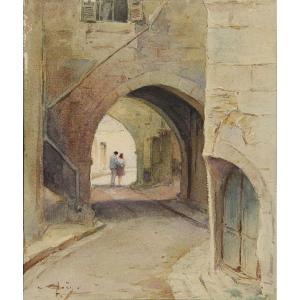


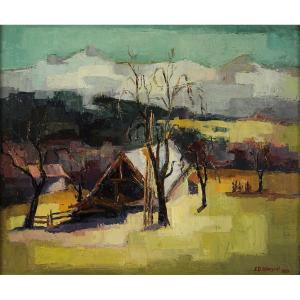












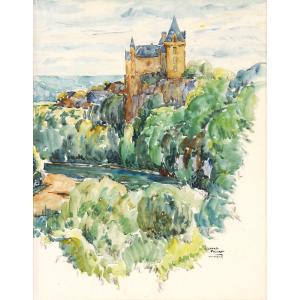
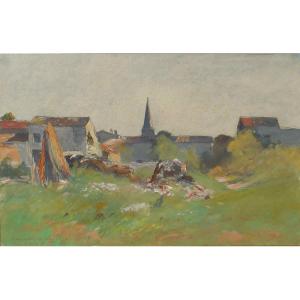
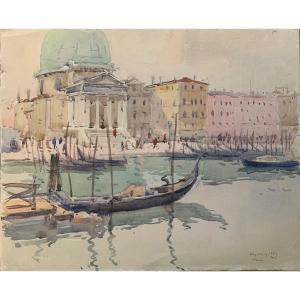



 Le Magazine de PROANTIC
Le Magazine de PROANTIC TRÉSORS Magazine
TRÉSORS Magazine Rivista Artiquariato
Rivista Artiquariato